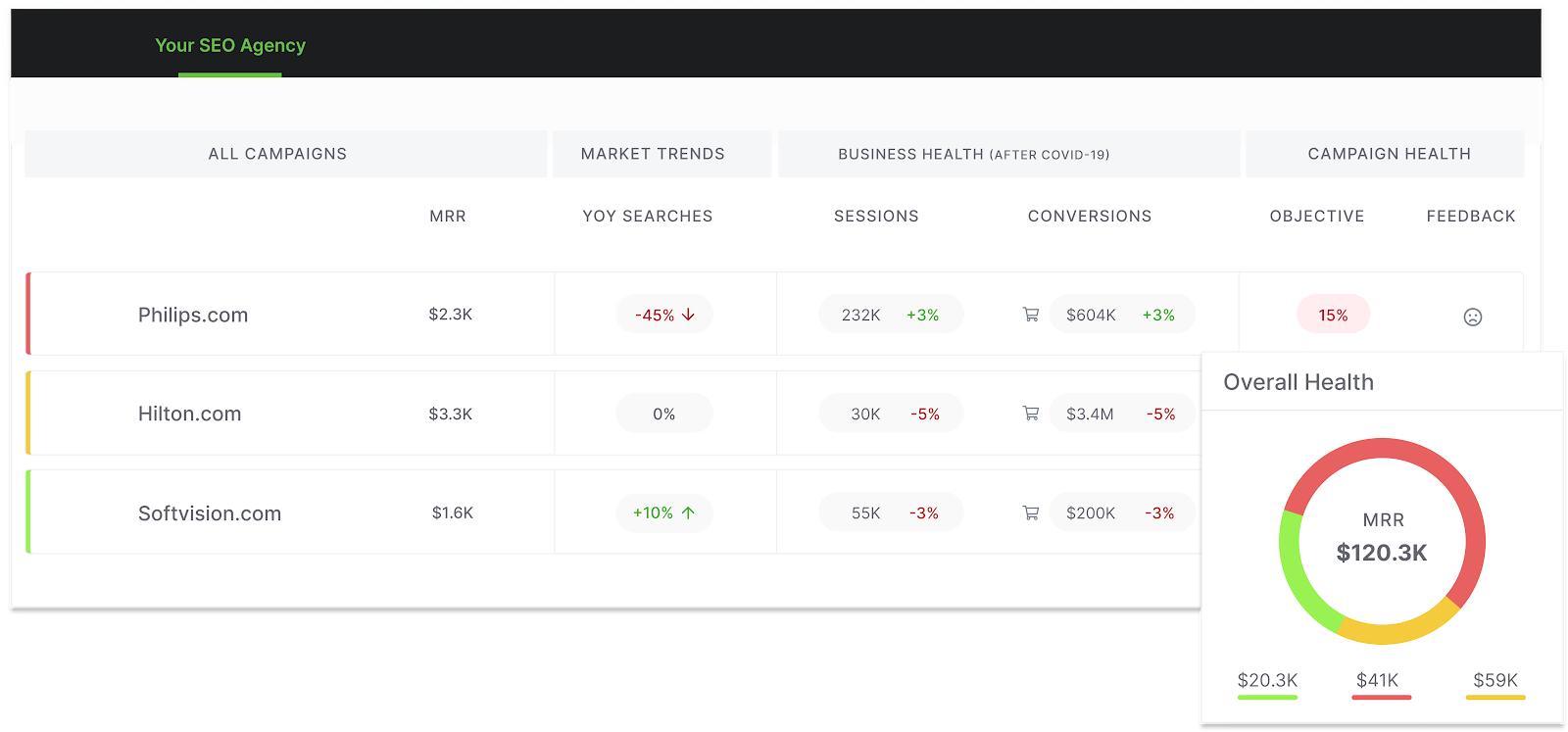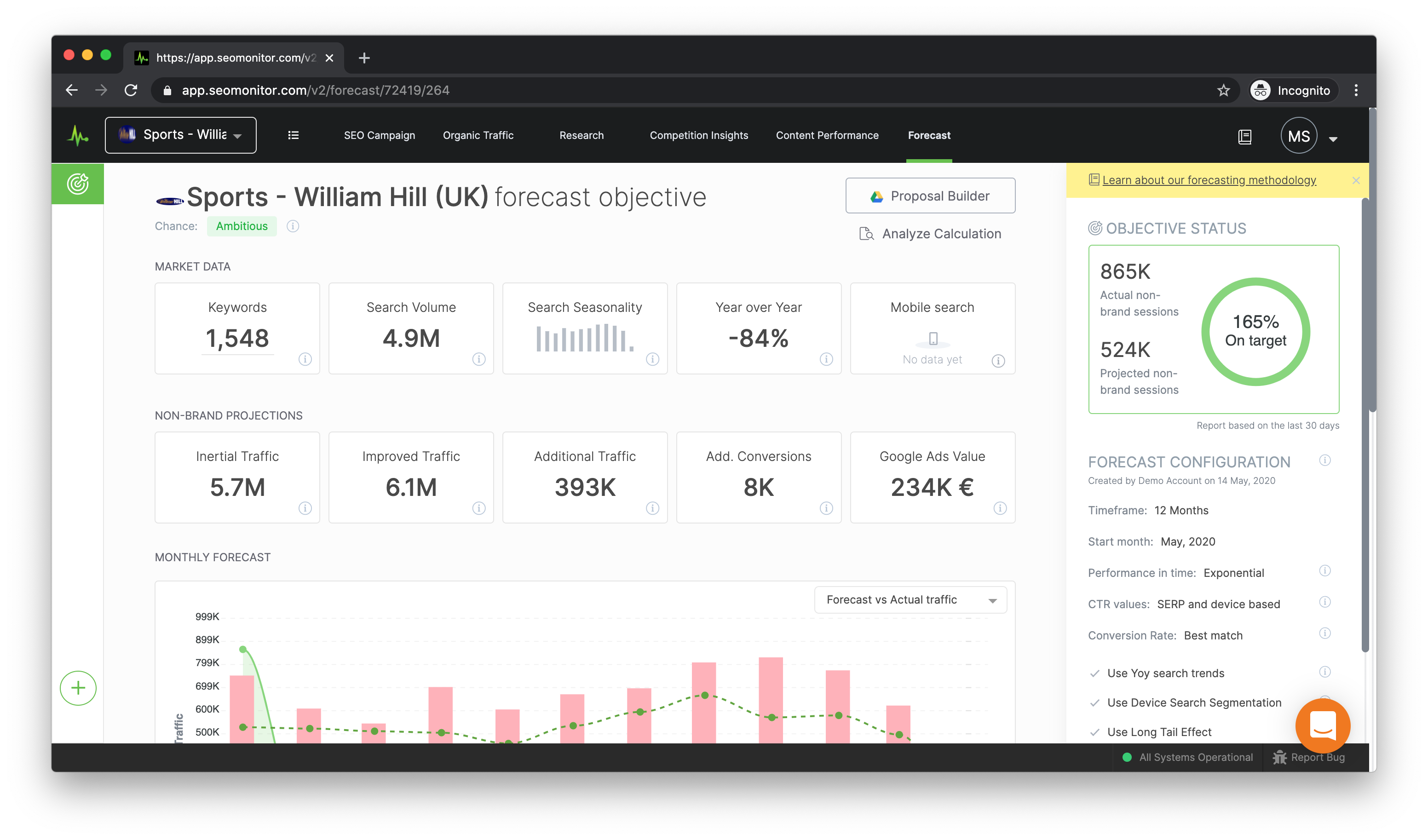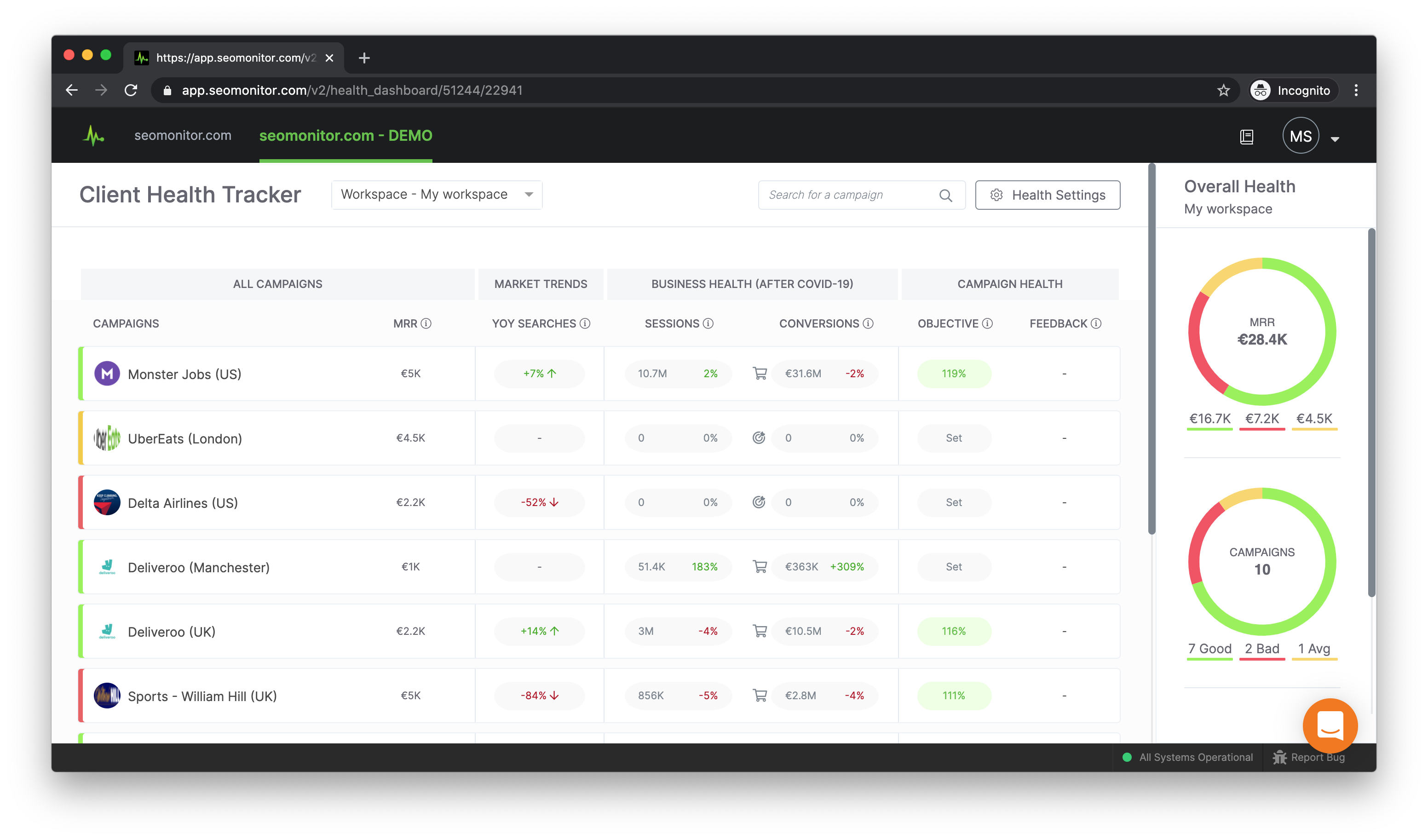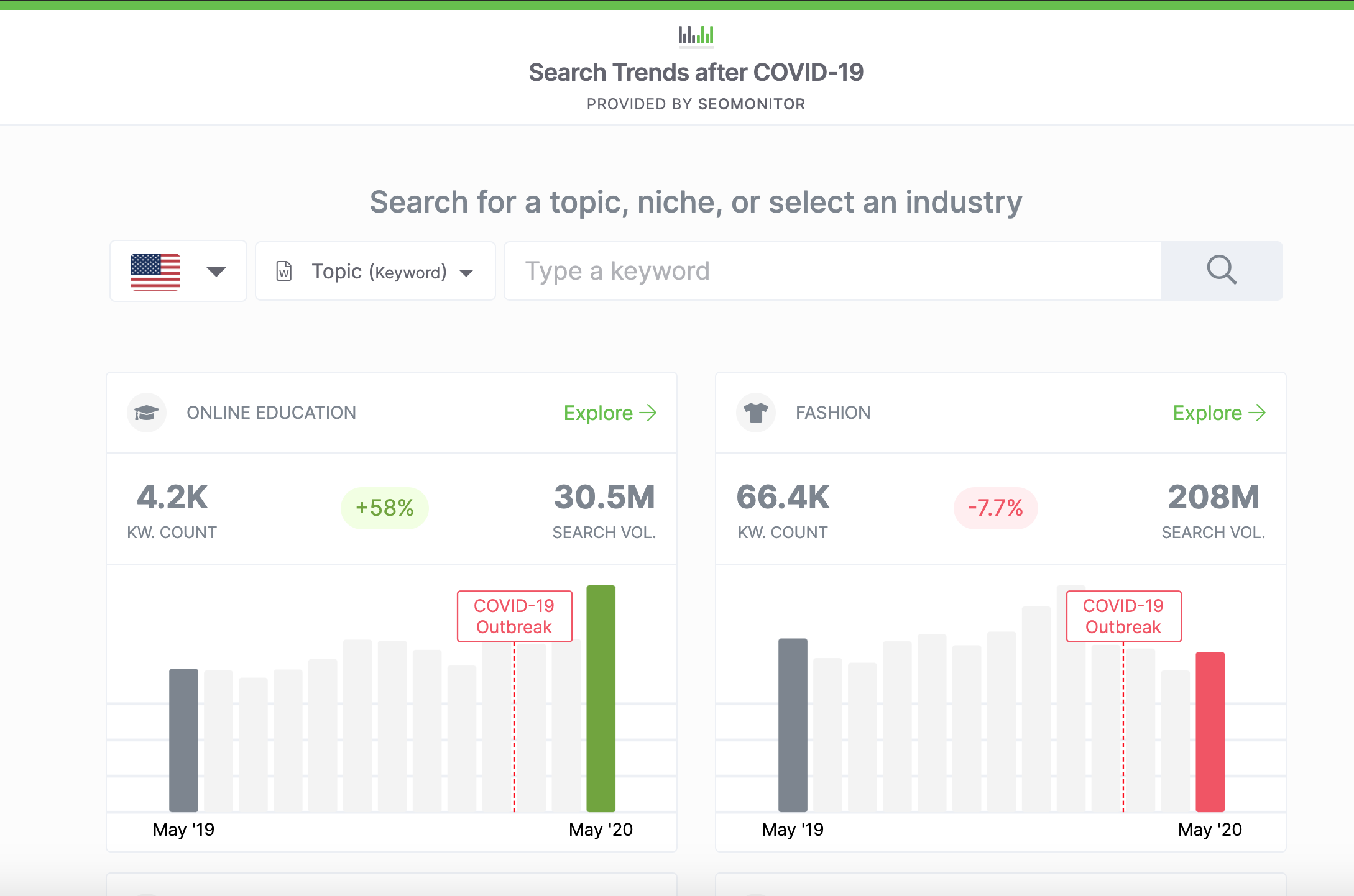Much of the world is out of lockdown, a new normal is negotiated, but there are many moving parts left to be tackled.
Of different sizes and shapes, these parts continue to reshuffle as demand keeps on evolving in new ways:
- Online behaviors change.
- Industry landscapes rearrange.
- The agency-client relationships transform.
- SEO campaigns have new challenges to consider.
If, at the start of the pandemic, agency clients may have paused campaigns or stopped the ongoing acquisition process, now the first signs of recovery appear, so we can address what’s next. But some companies are still approaching new campaigns with caution, not being sure what to expect from the following months.
In this context, how can SEO agencies unlock contracts and unpause campaigns still pending from a very different reality?
This part has no one-size-fits-all answer.
However, a series of questions can help you view this situation from a new perspective – helping your clients untangle their uncertainties through the right data for solving their problems. Your clients may have loads of data that keep on piling up, but they need your know-how to get the proper lens of what’s to be done right now.
Let’s dive into each question and see how your SEO agency can connect the dots.
How Is the Client’s Business Looking Right Now?
If we look at their pandemic journey, companies can be categorized by their operational status into what Found, a successful UK SEO agency, used as:
- Triaging: Shoring up cash and operations, while being focused on short-term actions.
- Assessing: Shifted from triaging to searching for opportunities, but on a small scale.
- Pivoting: Seeing opportunities in the new normal, changing some things that they were doing, and focusing on new products or services.
- Investing: Clients who’ve been thriving and are focused on continuing growth.
Knowing where the companies situate on the scale above helps your SEO team decide when to engage with them, how to open the conversation, or if it’s still better to “Wait and See”.
One way of designing that scale is to evaluate the health of the clients’ business.
You can measure it as the impact on their organic traffic in the last 3 months based on the year over year trend in order to remove seasonality influences.
You can add to this layer the comparison of the first 3 months of the year and what happened during the pandemic, to get an overview as well. So here’s how it can be addressed:
- Less than 10% drop in traffic: If their traffic is slightly affected, then they’re probably already investing in new opportunities and searching for ways to connect with their consumers. So they can be in a pivoting or investing phase.
- 10% – 30% drop in traffic: If their traffic is mildly affected, then they may be triaging or, provided they have a current increase, may be starting to assess small scale opportunities.
- Over 30% drop in traffic: If their traffic is moderately to severely affected, then they’re probably continuing to triage and need more time to get back on track.
You may also consider replacing organic traffic with conversions, based on the same scale above, to get a closer version of your clients’ reality regarding their financial situation.
When Is the Best Moment to (Re)Engage Your Clients?
Once you’ve mapped your clients’ portfolio in terms of health, you can start thinking about timing. Businesses may be waiting before making any decisions regarding their SEO investments because they need the data for now, so as to know where and how to develop their marketing strategy.
If your frozen accounts are still triaging and traffic doesn’t seem to be recovering, you can keep the communications open and share fresh insights (search trends, new consumer behaviors) from their industry, to maintain the relationship close.
But it’s probably not the right moment for negotiation.
Yet, if you have a solution for their specific problem, then you should make that call and offer to help, based on the current data you uncovered.
Also, if your frozen accounts show an improvement in week-over-week health measured in organic traffic and conversions, then you can start thinking about ways to reopen the conversation with a set of solutions in your pocket.
Want to focus on your clients’ particular needs and improve your chances of getting a response from them?
Use search data from the start to review their portfolio and engage in the right level of conversation.
Furthermore, as the best moment to interact is when something has changed in their health and you can intervene fast, you may want a system in place for this portfolio evaluation process, that automatically alerts you.
With this in mind, we adapted our SEOmonitor agency dashboard to present the health of your clients’ business in real-time and alert you via email whenever there’s a change in status, so you can take the necessary steps.

What Do Companies Need to Make a Decision About (Re)Starting Campaigns?
Now, as you decide to go even further with your research for the clients that can be contacted, you can address their reserve with specific data, and even support them in reprioritizing their products or services.
This review implies various data points you should take into account.
Impact on Non-Brand Organic Traffic
SEO performance is directly related to non-brand organic traffic, so try to evaluate the business based on the percentage of organic traffic coming from brand versus non-brand related keywords.
Is the percentage of brand-related traffic bigger or smaller?
Splitting the traffic like that is a good method of showcasing where your work’s value truly is and how you can help the business grow with the SEO campaign.
Keyword Research
The last three months have completely transformed search volumes and there is still a lot of shaky ground here. Make use of search volumes data from Google Ads, or even Google Trends, and identify the main topics in your client’s industry right now.
Also, look at competitors’ insights and see if they started ranking on keywords they weren’t ranking on before COVID-19. This can be an avenue for spotting opportunities for your clients and a good argument in building your case for unpausing that campaign.
Speaking of opportunities, you can add an evaluation of your keywords’ opportunity score in your process, to understand where the effort is too big and where you need to further focus for better results.
Seasonality vs. COVID-19
This is the moment when year over year search trends become meaningful in highlighting the shifts in demand, so compare them and see where there are critical changes.
Group those keywords into COVID-19-impacted and no-change – this will give you the necessary lens to offer the business strategic support if they’re considering refocusing their efforts. Plus, you’ll make the case for the right keywords to improve visibility for.
Project Business Results
One last step is to estimate business impact based on the existing conversion rates for the selected keywords. By making the connection between rankings and clicks and conversions, you tie the new SEO proposal to the projected business results.

Highlighting how search data connects to obtain better business results will get you one step closer to the final argument: making the case for both short-term and long-term investments in the clients’ digital performance. Once you painted their current business status, it’s time to address how search trends and optimization can work in their favour even in these circumstances.
How Can SEO Agencies Use Search Data to Unlock Contracts & Campaigns?
Based on your new analysis of both the industry and your clients, you can assess their current business status and present how their future may look like with your intervention on non-brand organic traffic and without it.
Making the projections and showcasing the potential additional traffic for the business is a first step in making them see the trend, and how that can translate to conversions and CTRs. This can be combined with your flexibility in adapting various scenarios, taking into account complementary tactics for short-term impact like paid search and content marketing tactics (with the caveat that they can have a high impact, but are time-bound).
These steps will become a strong point in favor of unlocking that contract – after all, it’s about shaping choices for your clients and helping them see the solutions at their disposal.
Even if it may seem premature, you can think about helping your customers gain further confidence in their future by using industry-level research from such sources like Deloitte or Google, making the case for a longer-term impact as well.
For instance, Deloitte maps the current status of the market sectors throughout the globe according to three phases of a crisis: Respond, Recover, and Thrive, while Think with Google offers trends insights from one week to the next, highlighting emerging trends like domestic vacations, staycations, contactless delivery, touchless travel, buying local and more.
You can go from macro to micro and back, helping your clients stay on top of how their industry is evolving while consulting them on the best possible scenarios and solutions for them based on actual search trends.
Summary
In the end, it’s a balancing act for your SEO agency between data and empathy, in order to start new conversations with both frozen and new leads.
It’s important to know when to approach them and what you can deliver to help their business push through:
- Evaluate your clients’ portfolio status based on their current business health (website traffic and conversions).
- Discover the best moment to (re)start conversations based on your evaluation results. Reach out to those clients that you can support with new opportunities and specific solutions for short-term results while keeping in touch with those that are still highly affected.
- Support your clients (re)start a campaign with relevant insights on search trends, competitors’ keywords, and create various scenarios for them to see how their business results can look, with calibrated search data and relevant reforecasting.
- Offer clients solutions to help them get back on track in the short-term, but also highlight their potential evolution with industry-level data and insights for the long-term. They may not know if they’re going to push through, so the search data you provide, combined with a simulation of the impact in business results, support them to make the right decision. It’s a good time to be an SEO agency – you’re not only consulting for their marketing but helping shape the choices for their businesses now.
We know there are many moving parts to juggle. So, in order to support SEO agencies navigate uncertainty and help their clients, we have adapted our platform and products to the new context as well.
We integrated the Client Health Tracker so it shows you the current health of a business after COVID-19 measured in conversations and sessions and the health of a campaign measured in the status of the SEO objective.

We also included a calibration feature based on YoY trends in the SEOmonitor platform, so you’ll be able to see the search volumes after COVID-19 and what changed in detail.
Or, if you start using the Forecasting module right now, you’ll have access to the fresh data you need. Our forecasting allows SEO agencies to connect non-brand organic traffic data to business projections.
We continue to invest in Search Trends after COVID-19, a free tool for SEO agencies to go granular with their analysis and find relevant trends in a specific topic, niche or industry.
You can use it to investigate emerging trends continuously, knowing that the monthly data highlights exploding and tanking categories in comparison with last year’s month.
It’s a complementary avenue for your SEO team to pinpoint possible opportunities to clients and explore pivoting options together.

We’ll get through this together!
Click here for a trial that doesn’t ask you for a credit card, but gives you full access to the platform.
Help your clients navigate
the new normal with the right data!
The opinions expressed in this article are the sponsor's own.



